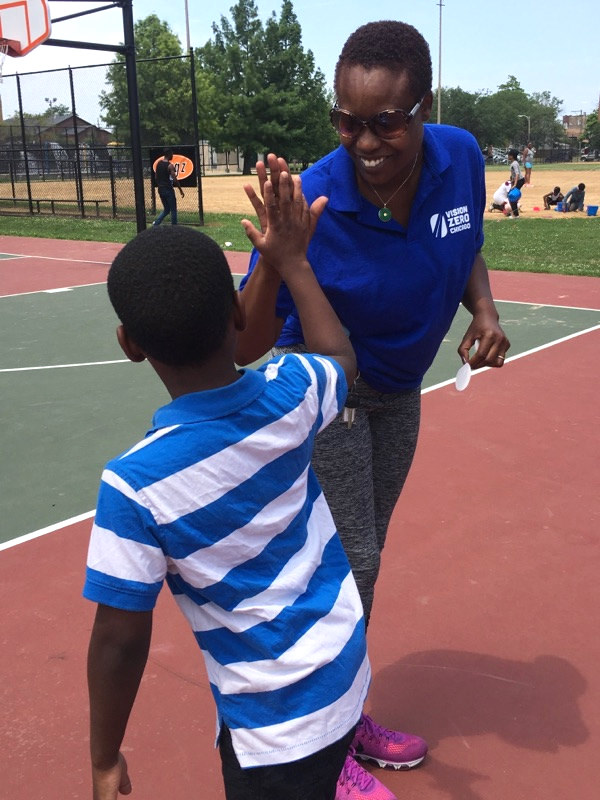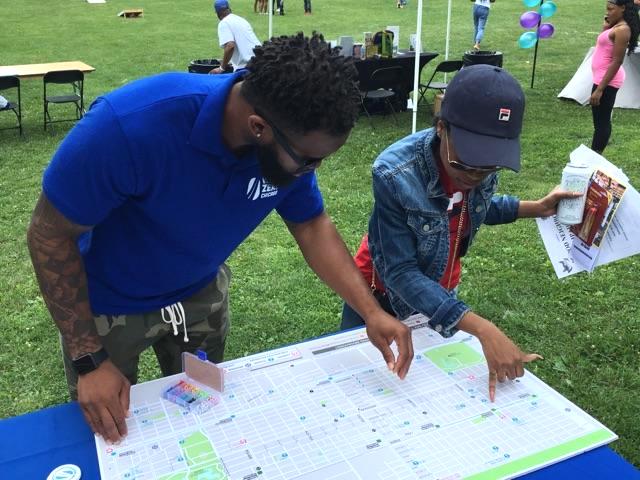[The Chicago Reader publishes a weekly transportation column written by Streetsblog Chicago editor John Greenfield. We syndicate a portion of the column on Streetsblog after it comes out online.]
Recently Slow Roll Chicago, a group that promotes biking on the south and west sides, called for more Black and Brown ownership of Chicago’s Vision Zero traffic fatality prevention plans. In the wake of this pushback, city officials detailed efforts to collect input for the program from residents of the current Vision Zero focus communities of North Lawndale, Garfield Park, and Austin.
During an online discussion on August 31, attended by transportation advocates and mobility justice activists from across the country, Slow Roll cofounder Oboi Reed called on the national Vision Zero movement to confront systemic racism as a root cause of higher traffic violence rates in neighborhood of color. He also asserted that more “authentic, sincere community engagement” by planners and advocates with residents is needed, and called for increased traffic enforcement to be taken off the table as a crash reduction strategy on Chicago’s south and west sides until the police department makes significant headway towards remedying civil rights violations. In addition, Reed argued that the city was wrong to publish its Vision Zero Chicago Action Plan without first holding public hearings.
At the September 13 Mayor’s Bike Advisory Council, Chicago Department of Transportation commissioner Rebekah Scheinfeld addressed some of these concerns. “The action plan released in June was really just the beginning of our collaboration across communities in Chicago, intended to be the launch of an effort that would continue to be complimented by very community-specific implementation strategies,” she said. “Vision Zero is for everyone, but we are also looking at where we have the opportunity to make the biggest positive impact in reduction of crashes.” The plan identifies eight “high-crash areas”—almost all of these communities are lower-to-moderate income sections of the south and west sides.

Scheinfeld noted that the current Vision Zero outreach effort on the west side, funded by an $185,000 grant from the National Safety Council are designed to gather community input “so that what happens in Austin, for example, around these goals, may not be the same as what the process looks like in West Town or downtown. The implementation strategies will be tailored to the context, with priorities for every community as defined by that community.”
The city has hired four community organizers to do outreach and collect data on the west side this year, including tabling at farmers’ markets, health fairs, and block parties. At the MBAC meeting organizers Brittanii’ Batts, DeAndre Bingham, and Antonio Redmond discussed their data collection strategies. These include community maps where residents can indicate hot spots for dangerous driving behaviors, such as speeding, failure to yield to pedestrians in crosswalks, and red light running, as well as crime hot spots.
“We get a lot of questions about crime,” Bingham said. “We tie it into Vision Zero—that if we can get more out on the streets to start walking and biking and being more visible in their neighborhoods, we can cut down on crime rates.”
In addition the organizers are distributing a traffic safety survey, also available online, that asks west siders about their commuting habits, whether they feel safe walking, biking, and riding transit in their neighborhoods, and what the one thing they’d like to see happen to improve traffic safety in their communities. Choices include education events, traffic ticketing, lower speed limits, changes to street design, and none of the above. Respondents can enter a drawing to win a $50 gift card.
CDOT is hosting three open houses on Vision Zero on September 26, 27, and 30 in North Lawndale, Garfield Park, and Austin, respectively, with free food and activities for children. Presentations on neighborhood concerns and priorities around dangerous driving will begin a half hour after doors open.
Slow Roll outreach coordinator Romina Castillo asked whether residents have been receptive to new bike lanes, which also shorten pedestrian crossing distances and calm traffic. “Are people like, ‘Oh yes, we want more of these’?”
Redmond said many locals are still getting used to having bike lanes in their communities, but the organizers have been spreading the word about their benefits. “I’m a biker myself and I live on the west side,” he said. “I tell them the bike lanes are not just there to look European.”





